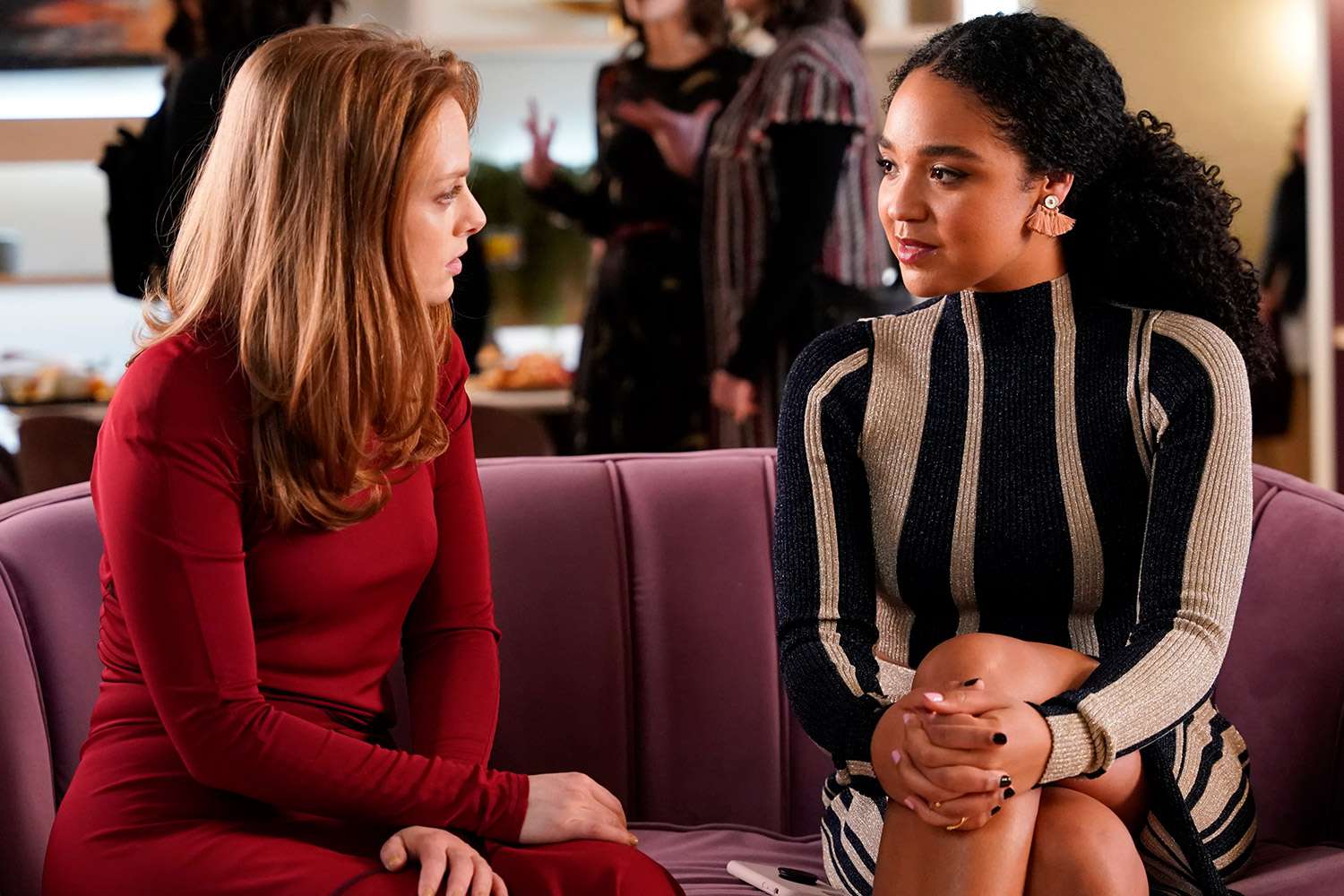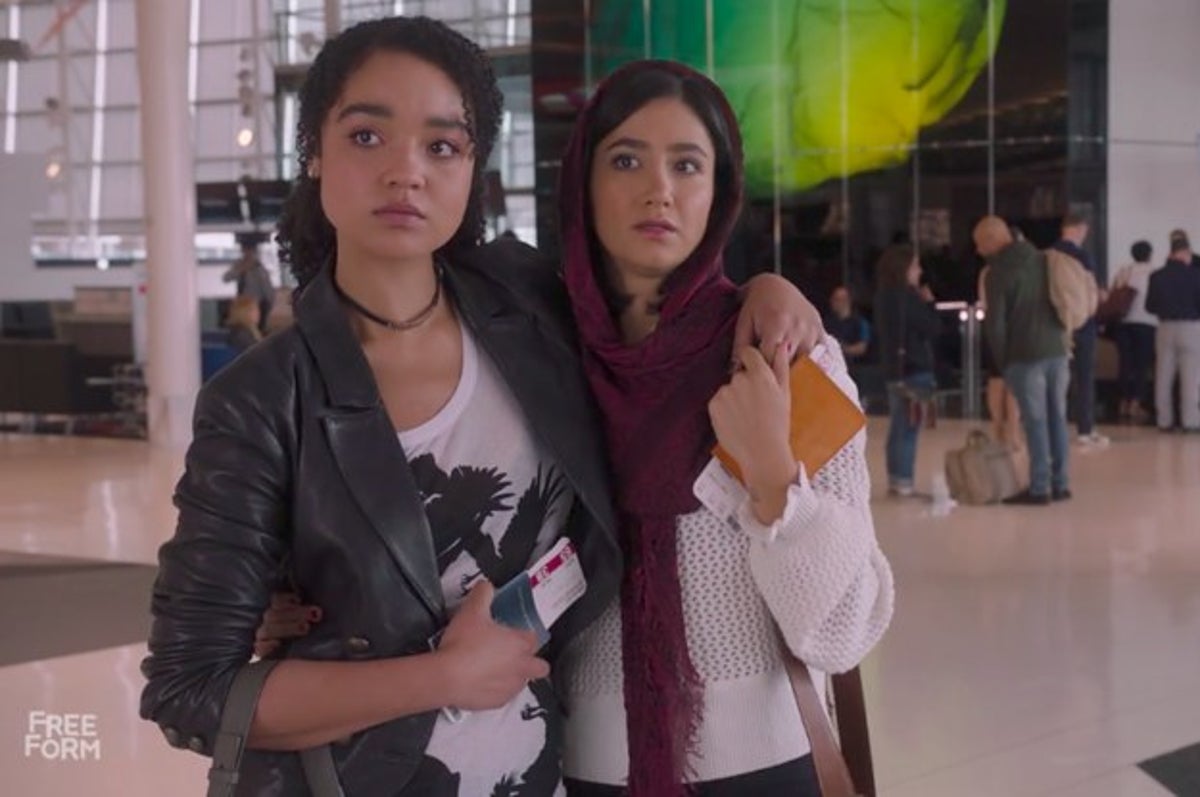Editor’s Note: FII’s #MoodOfTheMonth for November, 2021 is Popular Culture Narratives. We invite submissions on various aspects of pop culture, throughout this month. If you’d like to contribute, kindly email your articles to sukanya@feminisminindia.com
Women trying to strike a balance between their professional and personal lives, occupy the very centre of both Sex and the City (SATC) and The Bold Type (TBT). While the shows are similar in their depiction of female friendships and camaraderie in the otherwise male dominated New York City, they are distinctly different in the ways they handle the narratives on bisexuality.
Carrie Bradshaw (Sarah Jessica Parker) begins dating Sean, a bisexual man in the third season of SATC. She is flustered, visibly confused and a bit taken aback when Sean comes out to her as bisexual. The next morning over breakfast, she shares her concerns with her girl-friends and, frustrated, remarks, “I am not even sure bisexuality exists. I think it is just a layover to gay town.”
What follows throughout the rest of the episode is an incessant need to bracket Sean as either gay or straight. SATC, though progressive at the time of its release, limits sexuality within a binary. Every time the show depicts homosexuality, it conveniently forgets its complexities, as well as the existence of other kinds of sexualities.
Bisexuality is not a phase
In pop culture, bisexual individuals are often shown to be in a constant state of dilemma – they are indecisive and sometimes greedy. SATC happily participates in this stereotyping. Sean’s bisexuality is readily labeled as confusion and experimentation. His identity gets reduced to a mere flaw of the generation he belongs to.
Samantha (Kim Cattrall) asks, “All the kids are going bi?” As the four women move on in their conversation, their ignorance re-surfaces. They casually bicker about the bisexual men and women in college who have ended up with male partners and blame this on the unavailability of eligible straight men for them to date. Bisexuals are marked not just as confused, but are also called out for being greedy or for what Miranda very elegantly calls “double-dipping”.
Sometimes, these shows try to skip labels altogether in order to maintain an ambiguity. Rachel’s kiss with her sorority sister Melissa in Friends, Lily’s confusing dreams about Robin that reminds her “a woman’s sexuality is a moving target” in How I Met Your Mother and Katy Perry’s song I Kissed a Girl all hint at bisexual possibilities. But the lack of acknowledgement makes these marketing techniques where show-makers and producers nod at a possibility of the LGBTQIA+ representation without actually showing it, thus participating in what is called queer baiting
The complexity of being bisexual is portrayed as flippancy – a trend that seems almost futuristic. Carrie asks, “Was sexual flipping the wave of the future?” In reality, bisexuality is nuanced and intricate where experiences vary depending on each individual. Charlotte’s (Kristin Davis) insistence on choosing a side boils it down to mere confusion. Bisexuality according to SATC is an imaginary phase of ‘figuring it out‘. Carrie says, “I was in Alice-in-confused sexual orientation land”.
But SATC is not the only show that reduces bisexuals into a group of people lacking clarity. When a laughter track plays on cue as Phoebe (Lisa Kudrow) in Friends sings “Then there are bisexuals/Though some say they are just kidding themselves,” you can’t help but get furious. The insensitivity with which the writers have treated the fluidity of sexuality in the past makes these otherwise entertaining shows feel outdated.
Bi-erasure in popular media
When a heterosexual character invalidates an entire other kind of sexuality, it becomes extremely problematic. The tendency to ignore, negate, falsify and redefine bisexual experiences otherwise known as bi-erasure is very common in popular culture.
In season four of SATC, when Samantha begins dating a woman called Maria she proudly claims, “Yes ladies, I am a lesbian,” as if it is something you can transform into overnight. The sexual identities of these women are defined by the gender of the partners they choose for themselves. So they can either be gay or straight depending on the situation. This misrepresents the very fact that sexual orientation is not something a person can willfully alternate.
In a show like Friends, Ross’s ( David Schwimmer) ex-wife Carol is shown as a lesbian even when she was once married to a man and bore his child. There is no nuance to this transition or any engagement with how the woman found her sexuality. In another instance, Bonnie, Ross’s girlfriend’s sexual experiences with other women are casually brushed off as titillation for the straight men that surround her. Then again, Chandler’s (Matthew Perry) sexuality is questioned throughout the show only as a running gag that eventually leads to nothing. As the camera pans in on Phoebe while she gawks at Monica’s (Courteney Cox) cousin, the laughter in the background comes at an expense of her probable bisexuality.
Even a movie like Call Me by Your Name is described by The Guardian as the rhapsodic gay coming-of-age story, when Elio clearly enjoys his first sexual encounter with Marzia, a woman. Pop culture tries to normalise extremities because even in the liberal space, sexual fluidity disturbs the constant need to bracket individuals. Characters have to be gay or straight to check off the boxes that determine the content’s woke quotient.
Also read: Redefining The ‘Mainstream’: Queer Representation And Content On OTT Platforms
The importance of nuance in representing sexual fluidity
In SATC, Samantha labels herself as a lesbian and in the process somewhere nullifies all her previous sexual encounters with men. Furthermore, when she breaks up with Maria and goes on to have a string of male lovers, the show propagates the idea that homosexuality is something that can be grown out of.
Samantha’s relationship with Maria is treated as a phase and is forgotten for she is never shown having a same-sex relationship ever again. The writers explore the fluidity of sexuality but unfortunately get the fundamentals of it all wrong.
Sometimes, these shows try to skip labels altogether in order to maintain an ambiguity. Rachel’s kiss with her sorority sister Melissa in Friends, Lily’s confusing dreams about Robin that reminds her “a woman’s sexuality is a moving target” in How I Met Your Mother and Katy Perry’s song I Kissed a Girl all hint at bisexual possibilities. But the lack of acknowledgement makes these marketing techniques where show-makers and producers nod at a possibility of the LGBTQIA+ representation without actually showing it, thus participating in what is called queer baiting.
For queer people to feel that they belong in the content they consume, representation on screen is not the ultimate solution. It is only when queer writers, directors and producers are involved in a show that genuine queer experiences will be portrayed on screen. Heterosexual narration of queer experiences will result in stereotyping and typecasting. So, to include queer narratives in pop culture, the sprinkle representation on screen is not enough. It is only through inclusion of queer individuals in the creation of these shows that the mistakes of the past can be remedied
When characters are explicitly shown having relationships with people of more than one gender, but are not labeled as bisexual or pansexual or queer, they appropriate the queer space. This denial of representation and unfair appropriation frustrates queer audiences. On the other hand, shows like The Bold Type (TBT) go slightly further in the right direction and seem to emphasise on the need for labels.

Like Orange is the New Black’s (OTNB) Piper Chapman, Kat Edison (Aisha Dee) in TBT calls herself “a lover of people.” The show does indulge in queer stereotyping and portrays her as confused and her relationships unstable. But in a beautiful scene in season four, Kat points out the necessity of the label she chooses for herself. Coming out to her friends as bisexual she says, “This one feels important right now to own the space I’m in and to make sense of it.”
Kat’s instability in her same-sex relationship with Adeena is a stale stereotype of unstable queer relationships with which the show burdens the audience. But the show defines her sexuality and by proudly naming it, makes their bisexual audience have some visibility within the fictional universe of the show.
TBT defines Kat and celebrates bisexuality through her. By situating her in that space they acknowledge their bisexual audiences as well as the nuances of varied sexual experiences. Kat becomes relatable and human. Her experiences mirror reality. Unlike her predecessors, her bisexuality is not a prop for the writers to indulge in sexual promiscuity. Instead, TBT celebrates every complicated aspect of her sexuality while also upholding her identity as a professional woman.

In the last few years, the portrayals of characters like Adam Groff in Sex Education, Rosa Diaz in Brooklyn 99 and Kat Edison have attempted to normalise bisexuality in popular culture. Their sexuality is neither their primary trait nor is it used as a running gag. They represent the larger society while maintaining their own individuality.
They are not stereotypes or heterosexual imaginations of what bisexuality is. They are you and me and they share our experiences. Although pop-culture has come a long way, there are still miles to go. The portrayal of bisexual men and women doesn’t eradicate the need for gender non- conforming bisexual narratives. The expanse of bisexuality is huge and each individual experience is unique.
Brooklyn 99 and TBT’s efforts to portray bisexual experiences are commendable but definitely not enough. For queer people to feel that they belong in the content they consume, representation on screen is not the ultimate solution. It is only when queer writers, directors and producers are involved in a show that genuine queer experiences will be portrayed on screen. Heterosexual narration of queer experiences will result in stereotyping and typecasting. So, to include queer narratives in pop culture, the sprinkle representation on screen is not enough. It is only through inclusion of queer individuals in the creation of these shows that the mistakes of the past can be remedied.
Also read: The Bold Type Review: The Show Talks About Diversity, But Does It Walk The Talk?
About the author(s)
Udhriti Sarkar is a post-graduate student at Calcutta University. When she is not obsessing over fictional characters, she observes people and writes about them




